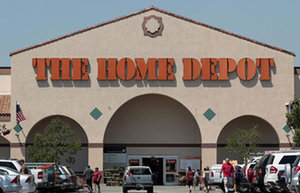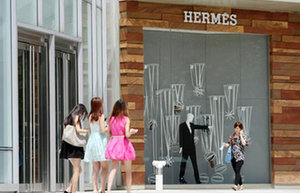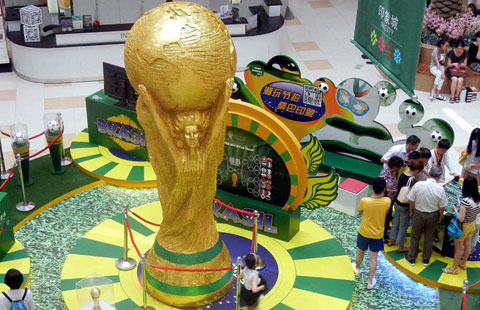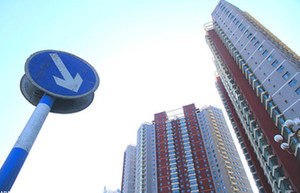Grim reality sets in for Hong Kong retailers
By Emma Dai (China Daily) Updated: 2014-06-11 07:34
 |
|
Photo taken in 2007 shows the night view of Hong Kong.[File photo/IC] |
Although official data for May is not yet available, on the first day of the Labor Day holiday-a traditional shopping period from May 1 to 3-the Immigration Department recorded an 11.88 percent drop in mainland visitors from a year earlier.
During the Dragon Boat Festival, from May 31 to June 2, Hong Kong received 2.5 percent fewer tourists from across the border, compared with double-digit growth in the same period for the past four years.
The city is looking for a way to manage the rising number of mainland tourists. Last year, 40.7 million of them visited Hong Kong, a tiny territory with 7.15 million residents. Three in four visitors arriving there are said to be from the mainland.
At a meeting with members of Commission on Strategic Development on May 26, Hong Kong Chief Executive Leung Chun-ying floated the idea of reducing the number of mainland visitors by 20 percent. "It's just an option," he told media the next day. "No decision has been made."
Yet voices rose against it immediately. "The local retail industry is boosted by tourism," the Hong Kong Retail Management Association said in a statement.
"Any slowdown or pause in the growth of tourist numbers would greatly affect the livelihood of 267,000 workers in the sector and damage its long-term outlook. A ripple effect would also hinder domestic consumption and cripple the economy of Hong Kong."
A 20 percent decline in mainland tourists would lead to a "material reduction" in the operating profits of Hong Kong retailers, the Barclays report noted. Companies that rent their operating space would see a big squeeze in margins in the short term, as rents for high street shops are usually fixed for three years.
Apart from retailers, developers also stand on the front lines. The share price of The Wharf (Holdings) Ltd, which operates the Harbor City and Times Square shopping centers, slid 3.5 percent after Leung's speech. So did Hysan Development Co Ltd, the "lord of Causeway Bay" with dozens of malls and street shops in the district. Lifestyle International Holdings Ltd, operator of SOGO, also tumbled 2.6 percent.
"The impact would be huge. Although the plan is to cut 20 percent, the real reduction could be bigger when the negative message gets out," said Joe Lin, executive director of CBRE Retail Services. "In the face of such cuts, rents for prime location shops could fall by 5 percent. On second- and third-tier shopping areas, it could dive 15 percent or deeper."
Marketing for retail leasing was subdued over the first quarter this year, Savills Plc reported in May. For prime street shops, rents fell 0.5 percent after declining 2.2 percent in 2013. Declines were steeper in some secondary locations.
Meanwhile, the gap between landlords' expectations and retailers' realities is widening. As a result, vacancy rates have been driven up in core retail districts as well as in some prime locations, the report said.
"Retailers are getting cautious. People no longer are willing to pay a 20 to 30 percent premium to bid for good locations. Now they only prefer prime streets," said CBRE's Lin. "Players are changing, obviously. Luxury stores used to be aggressive. But now, as mainland tourists shift to mid-range consumption, pharmacies, cosmetics and fast fashion are active."
"A rental adjustment cycle is underway, as slowing take-up, early surrenders and increasing vacancies start to test landlords. Shop rents will continue to drift down over the remainder of 2014," the Savills report said.
|
 |
 |
| Top 10 world's biggest retailers | Top 10 favorite luxury brands of Chinese women |
- May brings joy to car companies
- Shanghai pilot to steer growth of free trade zones
- Lives of carpenters on construction site
- Huawei releases a series of new smart phones in Malaysia
- Grim reality sets in for Hong Kong retailers
- Equities get lift from reserve cut, IPO approvals
- Top 10 Chinese products scoring World Cup goal
- 'Targeted moves' will help secure yearly goal

















